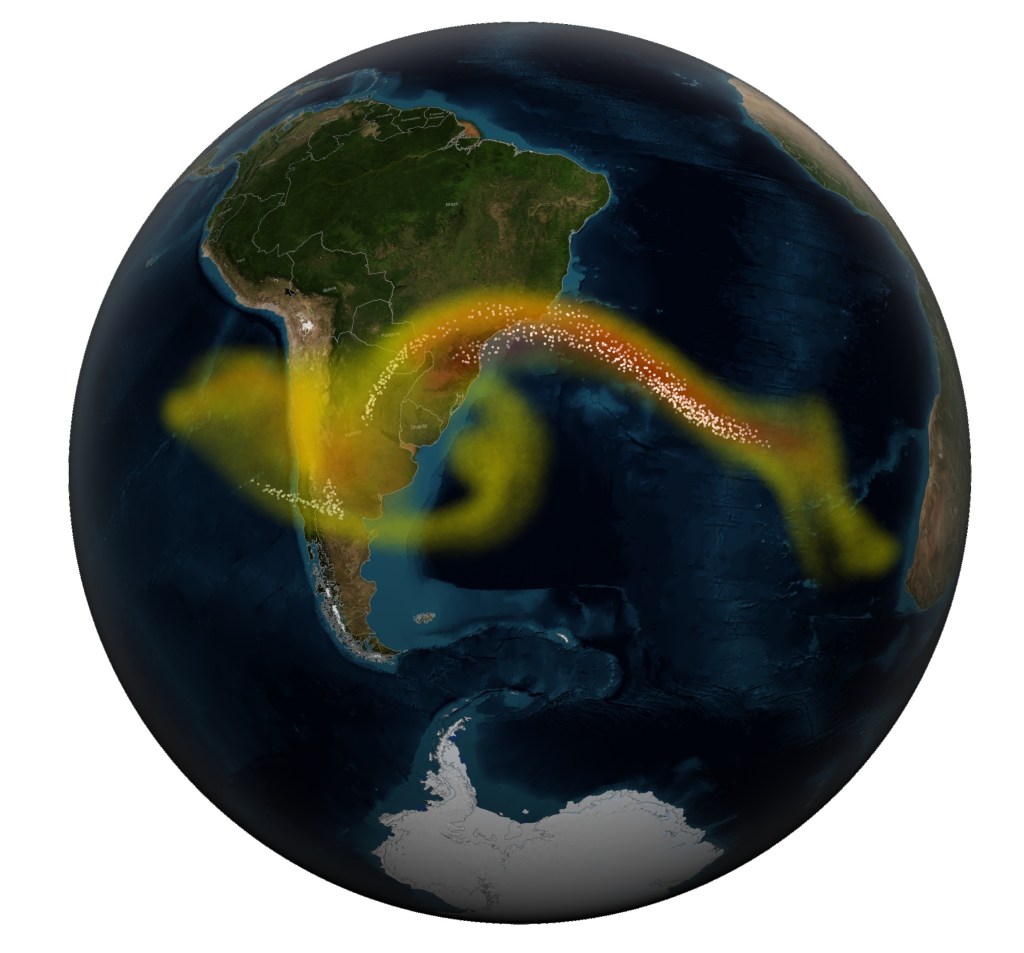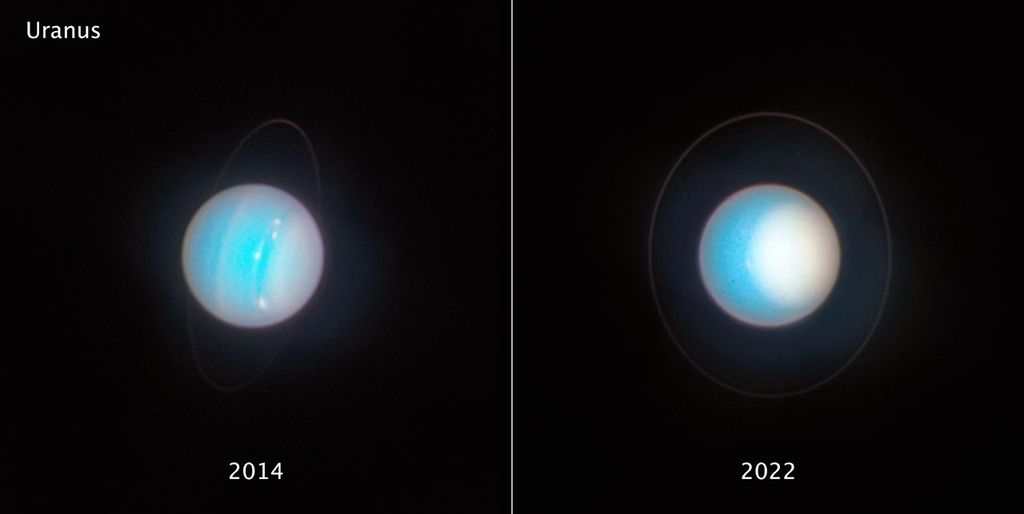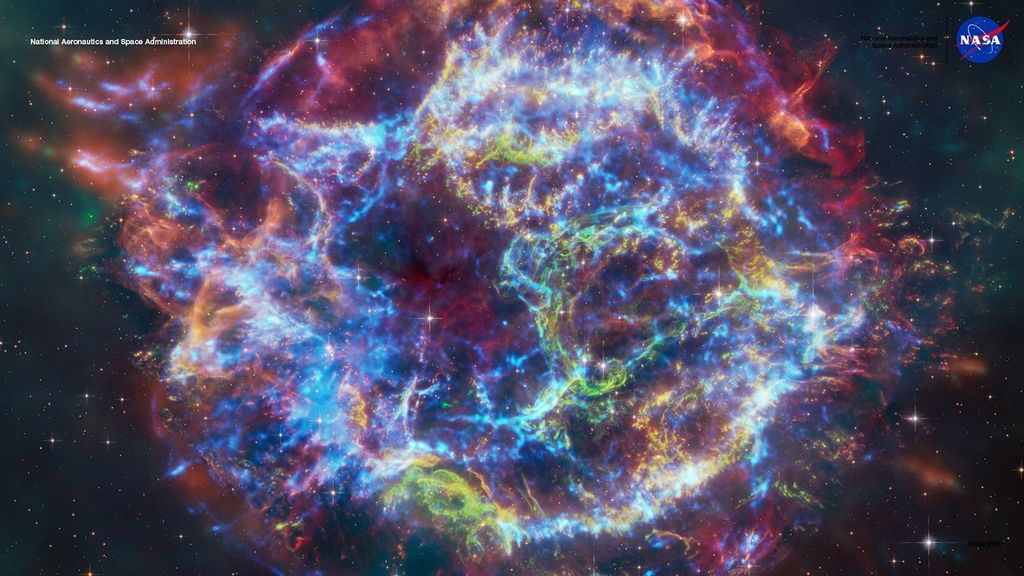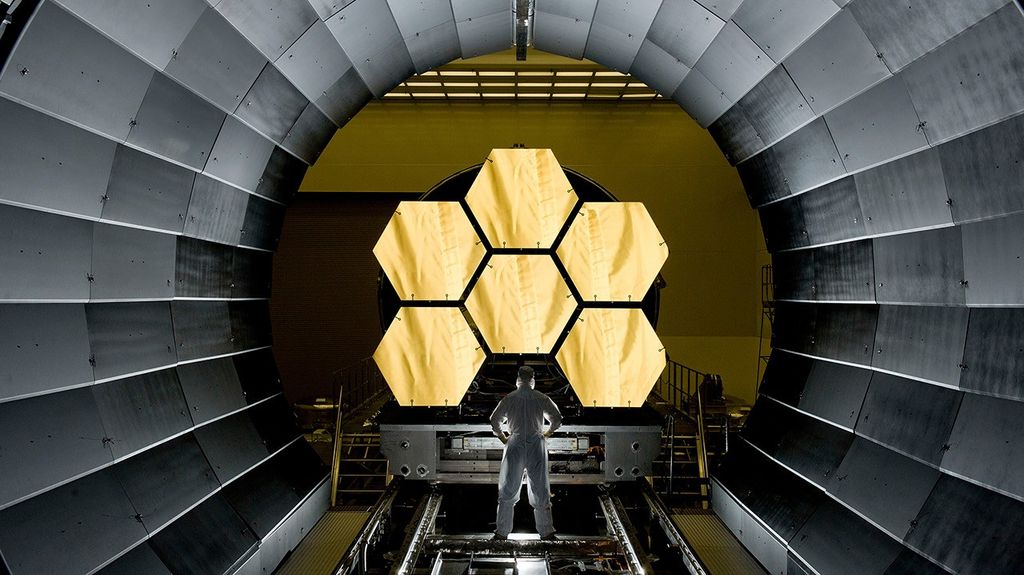Another week, another looping orbit around Saturn. Cassini carried out observations of nearly every sort this week, at a distance of 1,472 million kilometers from us on Earth, but up close and personal with the ringed giant. Many of these activities were of the remote-sensing kind, such as telescopic imaging and measuring various spectra.

Another week, another looping orbit around Saturn. Cassini carried out observations of nearly every sort this week, at a distance of 1,472 million kilometers from us on Earth, but up close and personal with the ringed giant. Many of these activities were of the remote-sensing kind, such as telescopic imaging and measuring various spectra. On two occasions, there were remote-sensing observations of a background star as it drifted behind the object of study; first it was the geyser-fed plume of Enceladus, and then Saturn's rings and atmosphere a day later. Observations of the direct-sensing, in-situ, kind characterized Cassini's immediate environment including the magnetic field, plasma, and ring particles, as well as the local radio waves and plasma waves. Another observation used Cassini's invisible radio beams to actively probe Saturn's rings, in a Radio Science occultation experiment. By the end of Cassini's Mission, which will be less than 25 weeks from now, the "miniature solar system" that is Saturn and its retinue will have been probed and looked at and studied in almost every conceivable way.
Wednesday, March 22 (DOY 081)
Before plunging close by the rings again, Cassini's Imaging Science Subsystem (ISS) began a 2.5-hour close-up observation of a "propeller" feature in Saturn's A ring. The propeller features in Saturn’s rings are named after early aviators, this one after Amelia Earhart. See also last week's featured "propeller": https://go.nasa.gov/2mMff0f . Also participating in the observation were the Composite Infrared Spectrometer (CIRS), the Ultraviolet Imaging Spectrograph (UVIS), and the Radio and Plasma Wave Science instrument (RPWS).
Just before crossing the ring plane, Cassini turned to position the Cosmic Dust Analyzer (CDA) to measure ring particles that enter this direct-sensing instrument. After the crossing, the Visible and Infrared Mapping Spectrometer (VIMS) took the reins, and conducted a ten-hour remote examination of Saturn's south-pole auroral region; CIRS and UVIS rode along.
By now, the fast-moving spacecraft had zoomed behind Saturn as viewed from Earth, and the Radio Science Team began an eight-hour experiment, actively probing the rings by sending three wavelengths of radio beams back through them, to be captured by Deep Space Network (DSN) stations in Australia.
Finally today, ISS turned to begin a 14.6-hour observation of Saturn's irregular moon Hyrrokkin. This little moon is estimated to be about 8 km in diameter, and it orbits Saturn in a highly eccentric, inclined, retrograde orbit, reaching as far as 24.6 million km from the planet. It was named after a giantess in Norse mythology.
Today’s news feature takes us to Cassini Mission Control: /news/10023/space-ace .
Thursday, March 23 (DOY 082)
Today UVIS, along with support from VIMS and CIRS, made a 13.6-hour observation looking back at the dark south-polar region of Saturn.
Friday, March 24 (DOY 083)
While in the neighborhood of Titan's orbit today, Cassini turned to favor CDA for 2.6 hours, to look for possible E-ring particles in the environment. Then, while CIRS undertook a calibration activity, RPWS made a dust-flux measurement, and UVIS made a solar wind survey.
Several Cassini scientists attended the 48th Lunar and Planetary Science Conference in The Woodlands, Texas. This was a five-day conference that wrapped up today.
Saturday, March 25 (DOY 084)
ISS took 90 minutes early in the day for a Titan cloud-monitoring observation, with CIRS and VIMS supporting. This was repeated later, as the final observation of the day.
With a view of Saturn's high northern latitudes, UVIS carried out a 9.2-hour observation of the planet's north-polar region; CIRS and VIMS rode along. Then, during a routine communications and tracking session with the DSN, Cassini floated through apoapsis, marking the start of Orbit #267.
Sunday, March 26 (DOY 085)
CIRS led UVIS and VIMS in a 10.6-hour study of the composition of the Saturn’s atmosphere. This was repeated on the following day in an observation lasting eight hours.
Monday, March 27 (DOY 086)
ISS scanned along the bright limb of Saturn for 2.5 hours, working with VIMS and UVIS, again to study the composition of the planet's high atmosphere. Next, UVIS collaborated with ISS, watching the blue background star Epsilon Canis Majoris for 1.4 hours while it passed behind the plume of material from Saturn's small active moon Enceladus. CIRS and VIMS rode along for this stellar occultation, which provided one final look at the water-vapor column density, and the mission's last opportunity to detect any long-term temporal changes in the plume.
VIMS took control of the spacecraft's orientation for a six-hour observation, with CIRS and ISS riding, mapping Saturn's northern hemisphere. Finally today, UVIS and VIMS collaborated to observe Saturn's sunlit northern auroral oval, first staring for four hours, then making repeated slews for another four hours as the next day of operations started.
An image of a so-called propeller, in Saturn's A ring, is featured today: /resources/17618 .
Tuesday, March 28 (DOY 087)
Slightly more than one day remains before Cassini again speeds southward through Saturn's ring plane, just outside the main rings. Coming in close to the planet today, VIMS began by mapping Saturn’s North Polar region for 1.4 hours, while the other telescopic instruments, ISS, CIRS, and UVIS, rode along.
Next, UVIS tracked the blue star Beta Crucis while Saturn's rings and atmosphere passed in front of it, by virtue of Cassini's motion. This stellar occultation offered vertical profiles of several hydrocarbon species and aerosols in Saturn’s thermosphere and high stratosphere. In this case, the star's ingress latitude on Saturn was –5.5 degrees, which is near the latitude where the Ion and Neutral Mass Spectrometer (INMS) will sample the atmosphere directly, near the very end of Cassini's Mission.
Everything you need to know about Cassini's daring and spectacular ending is available in a handy toolkit published here: https://saturn.jpl.nasa.gov/mission/grand-finale/overview .
The DSN communicated with and tracked Cassini on eight occasions this week, using stations in Australia and California. A total of 17 individual commands were uplinked, and about 2,230 megabytes of science and engineering telemetry data were downlinked and captured at rates as high as 124,426 bits per second.
Wrap up:
Cassini is executing its set of F-ring-grazing orbits of Saturn, with a period of 7.2 days in a plane inclined 63.5 degrees from the planet's equatorial plane. The 20 orbits are nearly identical, with Cassini's nearest point at about 150,000 km, and farthest point at about 1.28 million km from Saturn. Speeds relative to Saturn at those points (periapsis and apoapsis) are close to 76,150 km per hour and 9,000 km/h respectively.
The most recent spacecraft tracking and telemetry data were obtained on March 28 using the 70-meter diameter DSN station in Australia. The spacecraft continues to be in an excellent state of health with all of its subsystems operating normally except for the instrument issues described at http://saturn.jpl.nasa.gov/anomalies .
The countdown clock in Mission Control shows 171 days until the end of the Mission.
This new web page offers all the details of the Mission's ending: https://saturn.jpl.nasa.gov/mission/grand-finale/overview .
An illustration of Cassini's path up to mid-day March 28. Cassini's orbit looks the same again this week, but the positions of spacecraft and moons and the Sun are different.

































